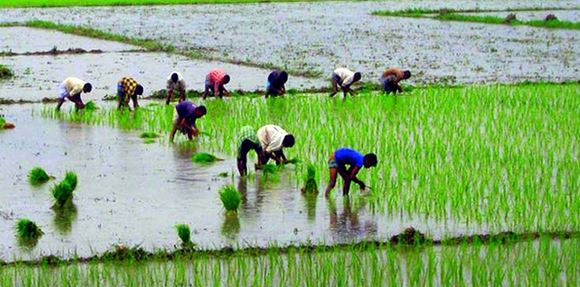
সহকারী অধ্যাপক


২৯ আগস্ট, ২০২৩ ০৭:০০ অপরাহ্ণ

সহকারী অধ্যাপক

Experts,
farmers expect optimum 'aman' output with supplementary irrigation
Farmers and
agricultural experts expect optimum output of country’s second major crop aman
rice through introducing supplementary irrigation in view of late monsoon rains
in parts of north and northwestern regions.
Lesser than expected
rainfall in late July and early August had initially exposed farmers in the two
regions to uncertainty about this year’s aman production, which was
particularly crucial this year due to global grain supply challenges.
“But they (famers)
were quick enough to opt for supplementary irrigation using the irrigation
pumps as advised by concerned government bodies and agriculture experts,”
Bangladesh Rice Research Institute (BRRI) director general Dr M Shahjahan Kabir
told BSS.
Farmers at several areas said aman seedlings grew older as they waited for
rainfall to soften the soil reducing their quality a little but enhanced
production was expected to cover the quality issue with the use of
supplementary irrigation.
“I was forced to plant
aman seedlings of over 20 days old on 10 kathas of land after days of waiting
for rain. It increased my farming cost, but I expect yield to high in volume to
cover the cost,” a farmer of Babutoli village of Mymensingh said.
The BRRI chief said the use of irrigation pumps instead of natural rains could
raise the aman production cost as high as 5 percent but it was crucially needed
for the country’s food security in view of the global scenario.
According to meteorological department records the country this year witnessed
35-50 percent less rainfall than usual during the season though parts of
Bangladesh like southeastern port city of Chattagram saw 28 percent higher than
natural downpour inundated twice.
Agriculture extension department (DAE) officials said over 77 percent
plantations were completed on an average by now across the country while at
places 97 percent of cultivation areas were covered.
“We are expecting 1.65 crore tonnes of aman output (this year)”, DAE director
general Badal Chandra Biswas said.
DAE earlier set a
production target of 1.71 crore tonnes of aman in 2024 while the last year’s
actual production was 1.63 crore tonnes.